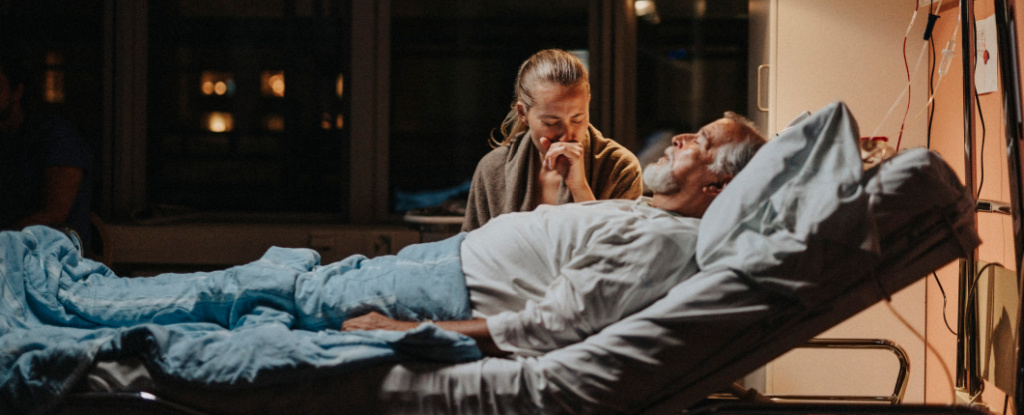It must be one of the hardest decisions people ever have to make: whether to let their loved one go, switching off their life support if signs suggest they won’t recover from a traumatic brain injury that happened just days ago.
But recovery is unpredictable, so doctors don’t really know which patients could possibly recover from severe head trauma if given more time, and who, if they were to live, would experience lasting brain damage and disability, compromising their quality of life.
It’s a delicate balance of unthinkable probabilities that no one wants to consider.
Now a team of researchers have tried: William Sanders, a medical researcher at Massachusetts General Hospital in Boston, and colleagues compared the outcomes of 212 brain trauma patients, to try to understand the impossible – what might have happened to patients if life support was left on.
Their findings, from 18 trauma centers across the United States, suggest that some patients with brain injuries who died after life support was withdrawn may have survived and even recovered some level of independence six months after injury.
“Our findings support a more cautious approach to making early decisions on withdrawal of life support,” says Yelena Bodien, a neurologist at Massachusetts General Hospital and senior author of the study.
Given the complexities, some guidelines recommend doctors refrain from making judgements about a patient’s prognosis too early. Research has only faintly begun to understand different patterns of consciousness within comatose patients. No guidelines or algorithms exist to help clinicians identify which patients might make a meaningful recovery.
Yet families are often asked to make the call within 72 hours of someone sustaining a severe brain injury. Unless patients make a rapid recovery in the first few days, it’s thought they are unlikely to survive or recover much at all.
The data Sanders and colleagues analyzed tentatively suggest otherwise.
From a cohort of 1,392 patients admitted to intensive care units with a traumatic brain injury, the researchers created a mathematical model to group patients based on their likelihood to have life support withdrawn, and their age, sex, health background, injury characteristics, and clinical features.
From there, Sanders and colleagues could match 80 people who died after their life support was turned off with 132 people who had a similar health trajectory up until and briefly after their brain injury, but didn’t have life-sustaining treatment withdrawn.
This allowed the researchers to estimate the level of recovery that might have been possible at three, six, and 12 months for the 80 people who died soon after life support was withdrawn.
Of course, we’ll never know what could have happened had the machines stayed on, but based on follow-up data of those in a similar, heart-wrenching position, we can glean some hazy insights.
The data revealed that 31 of the 56 brain trauma patients who stayed on life support died within six months; and 45 percent survived. Of the 25 patients who survived, more than 30 percent recovered enough in that same six-month period to have at least some independence in daily activities.
Just four patients recovered ‘fully’ to how they functioned before their injury.
While that’s a remarkable outcome for a lucky few, the findings show that overall severe disability is common, although a lifetime in a vegetative state is unlikely and recovery to some degree is possible, even after a very serious injury.
“Traumatic brain injury is a chronic condition that requires long-term follow-ups to understand patient outcomes,” Bodien says. “Delaying decisions regarding life support may be warranted to better identify patients whose condition may improve.”
In this study, the researchers couldn’t estimate potential outcomes for the oldest and most severely injured group, because no comparable patients were found among those whose life support stayed switched on.
Larger studies of more patients are needed to fill in the blanks and plot the recovery trajectories of these and other brain trauma patients.
The research has been published in the Journal of Neurotrauma.





